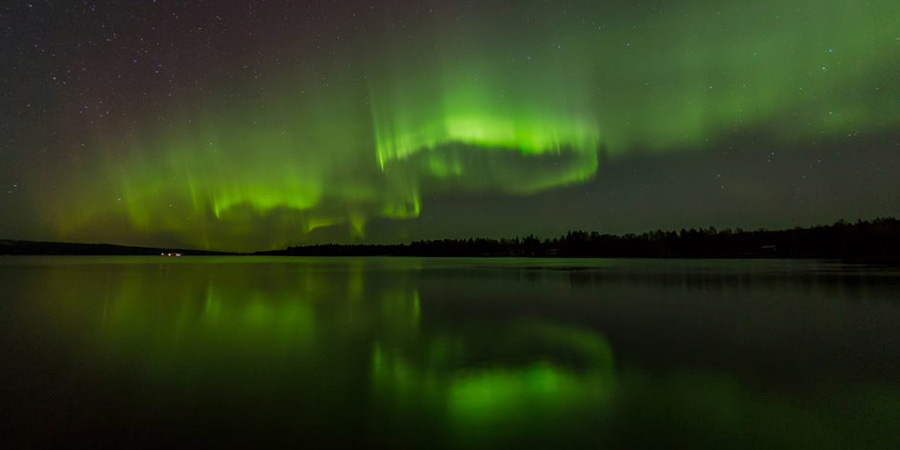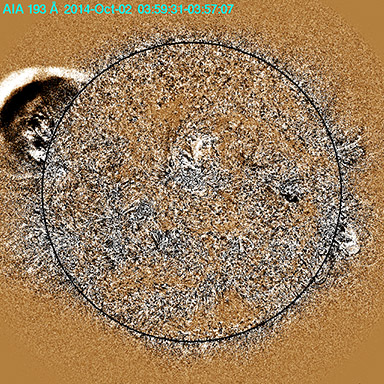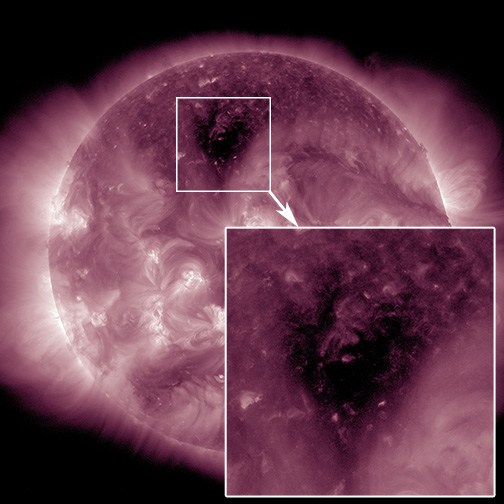Quiet conditions ahead, heart-shaped coronal hole
Thursday, 2 October 2014 10:16 UTC

There isn't very much going on right now on the Sun and geomagnetic conditions are also calming down as coronal hole effects wane. What can we expect more in the coming days? Image: aurora borealis as captured yesterday by Jani Ylinampa Photography just north of Rovaniemi in Finnish lapland.
Geomagnetic conditions
Coronal hole effects are starting to wane but aurorae were nontheless again seen at high latitude locations yesterday like we saw in the header image above by Jani Ylinampa from Finland. The direction of the IMF continues to fluctuate but the solar wind stats are slowly trending back to background conditions which will likely continue for the next 3 days. Auroral outbreaks remain possible at high latitudes but the activity will likely decrease.
Solar activity behind the eastern limb
While solar activity is low on the earth-facing disk (this will likely continue as none of the sunspot regions on the disk are very interesting) there might be a promising new sunspot region behind the limb that could boost the solar activity when it becomes visible. STEREO data is very limited at the moment but SDO (image below) captured the eruption that occured this night. It looks like the eruption was caused by a solar flare combined with a filament eruption. This likely come from a new sunspot region behind the limb and this not the return of sunspot region 2158 which was the source of an X1.6 solar flare back on 10 September 2014. Sunspot region 2158 has returned on the disk as a plage region.

Image: NASA SDO/LMSAL/Nariaki Nitta.
The Sun loves us!
A small coronal hole located on the Sun's northern hemisphere is currently visible. Nothing out of the ordinary apart from its shape... it almost perfectly resembles a heart! Amazing don't you think?
This coronal hole will likely not influence Earth at all but even when solar activity is low, there is always something that catches the eye on our nearest star.
Image: NASA SDO.
Thank you for reading this article! Did you have any trouble with the technical terms used in this article? Our help section is the place to be where you can find in-depth articles, a FAQ and a list with common abbreviations. Still puzzled? Just post on our forum where we will help you the best we can!
Latest news
Latest forum messages
Support SpaceWeatherLive.com!
A lot of people come to SpaceWeatherLive to follow the Sun's activity or if there is aurora to be seen, but with more traffic comes higher server costs. Consider a donation if you enjoy SpaceWeatherLive so we can keep the website online!

Space weather facts
| Last X-flare | 2024/12/08 | X2.2 |
| Last M-flare | 2024/12/23 | M1.0 |
| Last geomagnetic storm | 2024/12/17 | Kp5+ (G1) |
| Spotless days | |
|---|---|
| Last spotless day | 2022/06/08 |
| Monthly mean Sunspot Number | |
|---|---|
| November 2024 | 152.5 -13.9 |
| December 2024 | 106.6 -45.9 |
| Last 30 days | 116.1 -41.8 |


